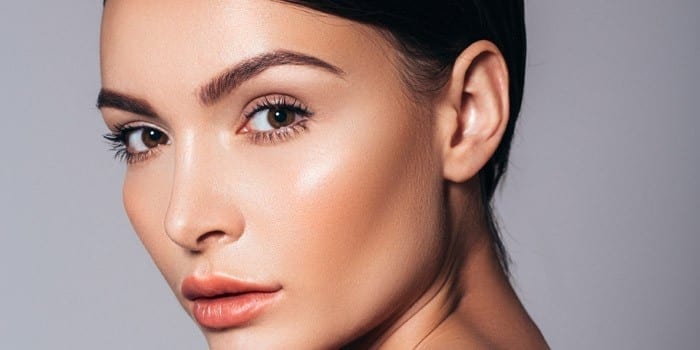Not to be a Debbie Downer, but fine lines, wrinkles and age spots aren’t the only skin changes you’ll face as you age. Skin also loses its firmness and can sag over time.
Several factors contribute to less taut, saggy skin: “One is the loss of the quantity and quality of the collagen and elastin in the skin,” which just naturally happens with age, explained dermatologist Karyn Grossman of Grossman Dermatology. “This causes the skin to become thinner and less resilient and appear older. In addition to genetics, sun exposure and smoking are the two biggest culprits that push our genetic tendency even further.”
Fat pads in our faces — particularly, under the eyes, in the cheeks and chin, and in the temples— keep skin looking firm and plump, but as we age, the loss and movement of those fat pads allows skin to droop, Dr. Grossman continues to explain. Your genetics mostly determine whether or not this happens, but the change in fat pads can also be aggravated by losing or gaining large amounts of weight.
Although facelifts can dramatically improve sagging skin, not everyone is up for — or needs — such an invasive procedure. “Many patients are afraid of surgery and want to go for something less dramatic that requires less recovery, less scarring, and no general anesthesia,” said Grossman.
So what can you do about saggy skin if you’re not willing to go under the knife? Grossman recommended these products and procedures:
- Ultherapy. “Non-invasive skin tightening is extremely popular both as a corrective way to lift and tighten the brow, neck and skin beneath the chin, as well as a way to help keep the appearance of younger looking skin,” said Grossman. Ultherapy uses focused ultrasound technology on the muscle-like layer of tissue in the face — the same area that surgeons lift during a facelift — which triggers collagen production. “Some people get amazing results,” said Grossman. Others may see moderate to small results, but Grossman pointed out that “many people are happy to give the treatment a try prior to doing more invasive procedures.” Ultherapy is FDA-cleared to lift skin on the neck, under the chin, and on the eyebrow, as well as improve wrinkles on the décolletage.
- Injectable fillers can help lift the face by restoring volume to wrinkles and folds. “One can often get a dramatic improvement with creatively and artfully placed [fillers],” said Grossman. “The key here is subtlety — you don’t want to overdo it.”
- Skincare products with skin-firming ingredients. Certain ingredients can help build up the thickness of the skin, which, in turn, can help with lifting and tightening. The most notable anti-aging skincare ingredient is retinol, and its stronger, prescription alternative Retin-A. “It actually works on a molecular level to repair the skin,” explains Jeannette Graf, M.D., assistant clinical professor of dermatology at Mount Sinai Medical Center in New York City. “It stimulates the fibroblasts in the dermis to produce collagen, and that helps create thicker, firmer, less wrinkled skin.” The downside? Debra Jaliman, M.D., a New York City dermatologist, tells YouBeauty that it can take months to see results.
This post is brought to you by YouBeauty and Ultherapy.
The non-invasive Ultherapy® procedure is U.S. FDA-cleared to lift skin on the neck, on the eyebrow and under the chin as well as to improve lines and wrinkles on the décolletage. For indications in your country, and full product and safety information, including possible mild side effects, visit Ultherapy.com/IFU.
1005436A




































